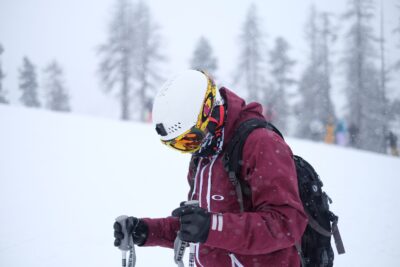Guide to buying a ski helmet


Modern-day skid lids have come a long way since those early days when you’d pop one on your head and excitedly go to check yourself out in the mirror only to realise you looked like you were about to be shot out of a cannon. While the purpose of a helmet hasn’t changed – i.e. to protect your noggin should you have a fall or be taken out from behind by an out of control eejit – the latest line of lids not only look better, they feel better to wear and they’re better at keeping you safe, too.
With high-tech materials bringing down weight, huge improvements in fit, the emergence of a new breed of triple-certified helmets, the addition of visors/shields, magnets and MIPS tech being increasingly integrated across the board, it’s safe to say (see what we did there?) that latter-day lids inspire confidence while offering style, comfort and versatility. From a strange-looking optional bowling ball to an essential bit of kit for resort riding and backcountry exploring, it’s a super-fast growing sector that’s evolving all the time.

Firstly, measure your head at its widest point, above the ears and in the centre of the forehead in cm, this will give you a guide to the size you need.

Next, get into your local ski shop and try one on. Like footwear, shapes vary from manufacturer to manufacturer. The helmet wants to be relatively snug on your head when the adjustment is at its loosest, then take up any slack with a twist of the helmet’s fit system.

Take your favourite goggles with you to make sure they fit nicely with the helmet, or splash out and buy some new goggles to complement your shiny new lid.

Ask your shop about the helmet’s intended use. It’s pointless buying a lightweight, low-profile touring helmet if you are going to spend all your time in the park where a hard shell would be a much better option.

And mums and dads, please please please don’t buy a helmet for little Johnny or Jane to grow into! I know you want it to last, but if it’s too big, it’ll be uncomfortable at best and totally useless at worst.








That’s our guide to buying a ski helmet. Ready to dive in to what’s on offer? Take a look at our pick of the best helmets of 2024: